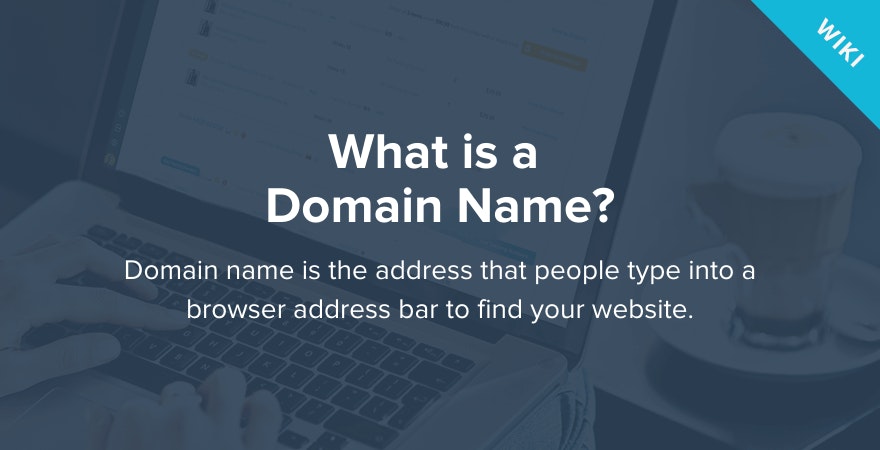
Domain Name



What is a domain name?
A domain name is a unique string of text that stands in for the numerical IP addresses used by web browsers to retrieve and display the content of websites from the servers where they are stored on the internet.
In simple terms, a domain name is the address people type into a browser address bar to find a website. This system allows computers to find the server where a website is hosted, while providing a human-friendly, easy-to-remember address for internet users.
→ Click Here to Launch Your Online Business with Shopify
What are the parts of a domain name?
Domain names are composed of at least two (sometimes three) parts: a top-level domain, a second-level domain, and an optional third-level domain (also called a “subdomain”).
Each part of the domain name tells the browser something different about the website's location.
Top-level domain (TLD)
Also called “domain extensions”, TLDs are the last part of a domain name and provide a broad categorization of the associated website's purpose or geographical location. The most common TLD is the generic .com, but other common ones include .org for non-profit organizations and .gov for government entities.
Second-Level Domain (2LD)
The second-level domain (2LD) appears right before the TLD. For example, in the domain Oberlo.com, the 2LD is "Oberlo". This part of the domain name is unique to each website, serving as a key identifier in the set of instructions that guide browsers to the correct location on the internet.
Subdomain (Third-Level Domain)
Subdomains, also known as third-level domains, are an optional part of the domain name that appears before the 2LD and the TLD. They are commonly used to organize different sections of a website, such as a blog or shop (e.g., "blog.example.com" or "shop.example.com"). This allows the company to keep different parts of the website separate while still under the umbrella of the same domain name.
What is the difference between domains and URLs?
A domain name is a part of a web address, also known as a URL (Uniform Resource Locator). Domains act as a set of instructions that leads browsers to a specific website on the internet, and the rest of the URL points to a specific web-page or file hosted on the website.
A full URL also includes the protocol (https://) which instructs the browser on the method to retrieve the website's data and the path which directs to a specific page or file on the website.
How do domains work?
When you type a domain name into your web browser, the browser uses the Domain Name System (DNS) to find the corresponding IP address for the website's server, and then retrieves the website's data from that server to display the website on your screen.
What is DNS?
The Domain Name System (DNS) is a universal, decentralized system that maintains a directory of domain names and their corresponding IP addresses. The DNS is crucial to ensuring browsers can reliably use domain names to find websites.
What is a domain registrar?
A domain registrar is any company that facilitates the registration and management of domain names on the internet. This can include dedicated domain registration companies, web hosting services, or website building platforms.
There are numerous providers of domain registration services. For instance, Shopify, a platform for building e-commerce websites, offers domain registration as part of their services. Other common providers include dedicated registration companies like GoDaddy, Bluehost, and Namecheap, as well as website building platforms such as Wix and Squarespace.
How to choose a domain name
Choosing a domain name is an important step in establishing your online presence. The right domain name can contribute to your website's visibility, branding, and credibility.
Here are some tips to consider when selecting a domain name:
- Keep it short and simple: Shorter domain names are easier to remember and less prone to typos. Aim for a domain name that is concise, easy to spell, and easy to pronounce.
- Avoid numbers and hyphens: Numbers and hyphens can be confusing when spoken aloud and are often misunderstood. If possible, stick to letters only.
- Use relevant terms: Including terms related to your business or industry can make your domain name more intuitive and appealing to potential visitors. A domain name that clearly indicates what you offer can also be easier for people to remember.
- Ensure it's available: Use a domain name search tool to check the availability of your chosen domain name. If it's already taken, you might need to get creative or consider other options.
- Choose the right TLD: While .com is the most common TLD, there are many other options available. Consider the nature of your website and your target audience when choosing a TLD.
- Check for trademark issues: Before finalizing your domain name, make sure it's not trademarked or being used by another company. This can help avoid potential legal issues down the line.